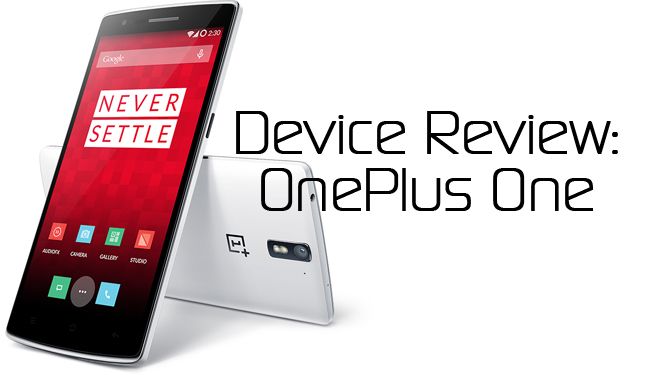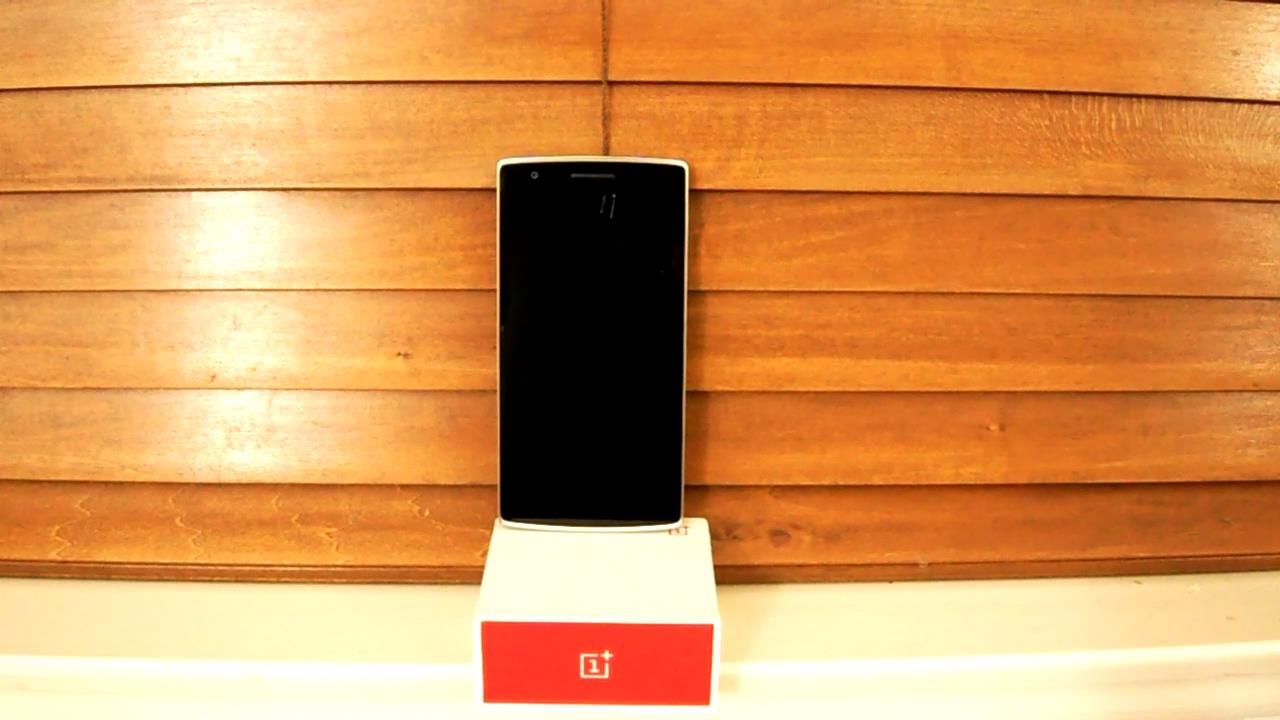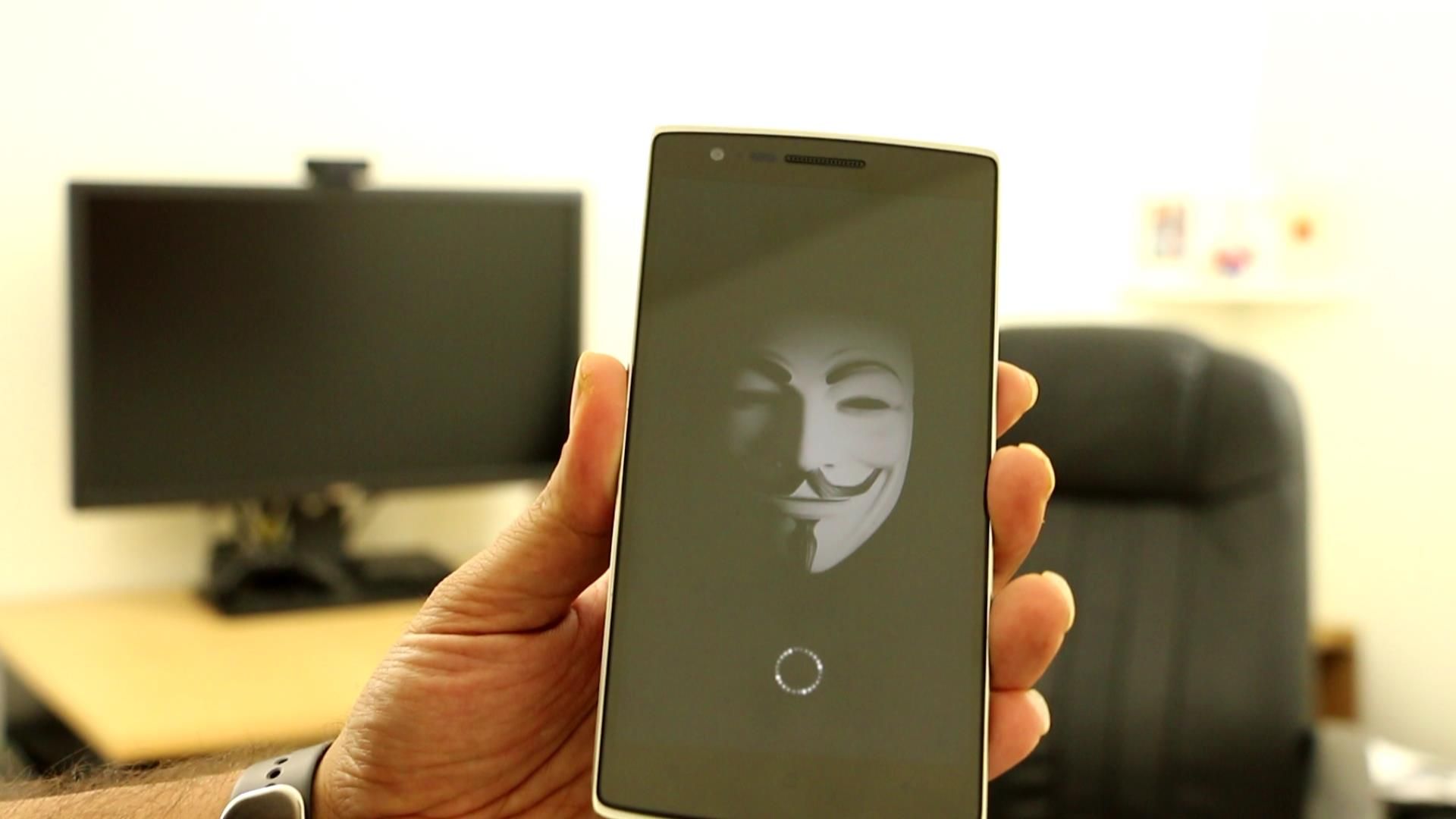Seemingly every day, there are a bunch of new devices being released. Some are budget devices and some are flagship devices. Naturally, there are budget conscious enthusiasts who would like to have both. Recently, a device has made a big splash in the tech industry, and is called by some as the Nexus killer. Then again, what’s not being (perhaps inaccurately) called a Nexus killer these days? This device is the first offering from OnePlus. Let dive in and see if we have a Nexus killer or not.
Before we start this review, please note that some people are having some issues with the service of the company. That being said, this review is of the device hardware and software and our experience with it.
The version of the 1+1 that we are reviewing here today is the black 64GB option. The outside of the device is clean and reflects an attention to style by OnePlus and its unique relationship to Chinese manufacturing company Oppo.
There is a power button on the right, but fear not, the CyanogenMod install makes it almost unnecessary. Additionally, you will find the headphone jack on the top, a Micro USB on the bottom, and a volume rocker on the left side next to the SIM slot. In the photography department, you have a 13 MP shooter on the back and 5 MP on the front.
Display
The display is colorful and sharp at 5.5 inch size. Sporting an IPS panel at the Full HD resolution of 1920 x 1080, working out to 401 PPI with Corning Gorilla Glass 3 and Touch-on-Lens Technology, the display looks and feels great. Even in sunlight, watching movies on this display was a pleasure.
My review unit does suffer from the much publicized light yellow bar on the display. Yet, it was not readily apparent and I could not see the line while using the device day in and day out.
Hardware
Hardware specs include a 2.5 GHz quad-core Snapdragon 801, which features the Adreno 330 GPU, as well as 3GB of RAM. These specs make the OnePlus One comparable to flagship devices from HTC and Samsung. CyanogenMod 11s makes full use of the hardware power.
The back is removable, but it is really a cosmetic feature, as there is no removable battery and no expandable storage. For most, the built in 64GB storage should be more than enough to satisfy your storage needs.
One issue with the back is that you need to be surgeon to get back cover off. If you ever want to change it out, you will be in for the long haul. Thankfully, the black cover on this unit looks great, though it attracts many fingerprints.
Battery
The non-removable OnePlus One battery comes in at 3100 mAh, and it uses lithium polymer technology. Using the device for 1.5 weeks, the battery was holding out for 1 to 1.5 days on a single charge. This is very impressive since my experience with the Note 3 (which has a bigger battery) would get perhaps a solid 14 hours from a full charge.
Camera
In the camera department, the OnePlus One has a 13-megapixel Sony Exmor IMX 214 at f/2.0 Sensor with dual LED flash for the main shooter on the rear. The front camera is 5 megapixels. The camera software is nice, has a lot of filters, and performs quickly and decently.
You can record video up to 4K using this Sony 13MP sensor. You even get slow shutter option for nice video effects. While the camera app looks stock, you have a lot more options than the normal Google Camera. Perhaps this is a credit to the years of customization experience from the CyanogenMod team.
Speakers
While we usually don’t call out the speakers explicitly unless they are unique the OnePlus One has caused a bit of a stir with theirs. While there are two speakers, there are not stereo. What is actually on OnePlus One device is dual mono speakers. Though they are not stereo speakers they produce loud sounds and the built in EQ makes tweaking the settings easy. I was able to watch a movie on the bus and still enjoy it. It would have been nice to see stereo speakers, maybe OnePlus Two.
Software
CyanogenMod 11s based on Android 4.4.2 is what runs on this device. The CyanogenMod team built this version specifically for this device. The implementation of CyanogenMod 11s is perhaps the best OEM software out of the box that I have seen.
The OnePlus One has a lot of options to customize it out of the box, making it quite possibly the most customizable device from the factory. Some of the apps you get include a theme manager, a built in EQ, and the CyanogenMod gallery.
The CyanogenMod team has historically been very good at providing OTA updates for the devices it supports. The fact that we have KitKat 4.4.2 under the hood is not a major issue, and 4.4.4 should be supported shortly after release. You can control the device with gestures, even if the device is sleeping. Some of the gestures include: fast camera launch, flashlight, and double tap notification bar to sleep.
Hackability
From a hackabiltiy standpoint, you have many options right now. The OnePlus One is very developer friendly. You can root and unlock the bootloader, and get TWRP installed. You can install custom ROMs including the Color OS ROM from the OPPO Find 7. There's quite a bit of development activity within the device forum.
Conclusion
The OnePlus One is the device that wants you to believe that it will be a Nexus killer. In truth, it’s comparable to many flagship devices currently on the market. At $299 for the 16GB model and $349 for the 64GB model, it’s a great deal to boot. It’s even cheaper than the current Nexus 5! Like the Nexus line, it’s sold unlocked.
Other than perhaps the speaker situation, there isn't too much corner cutting here. It's a great phone with a great set of hardware specs, as well as a good software experience to match. Now we just have to wonder why they don't also release a tablet.




